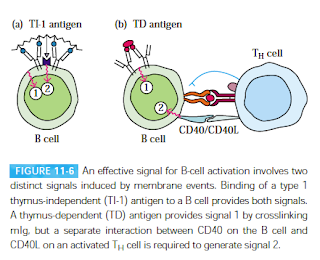Plasmodium- Therapy, Resistance
Greetings
 |
Photo 1: The bark of the
cinchona tree.
|
One of the most well known tropical infections is "Malaria". As I have talked about before (Link), There are huge efforts behind the development of a good antimalarial drug. Its my belief that if someone develops a good drug, the developer is a candidate for award. The traditional drug of choice has been the quinine. More recent shift to Artemisinin showed great promise. But there is more to the story.
In 1891, Paul Ehrlich discovered that Methylene blue was an antimalarial. However, it was the introduction of quinine into medicine that really set the stage. Use of quinine has been known in the east for more than 4 centuries. I found the following story in Malaria Journal, which am quoting. "According to this legend, an Indian with a high fever was lost in an Andean jungle. Thirsty, he drank from a pool of stagnant water and found that it tasted bitter. Realizing that the water had been contaminated by the surrounding quina-quina trees he thought he was poisoned Surprisingly, his fever soon abated, and he shared this accidental discovery with fellow villagers, who thereafter used extracts from the quina-quina bark to treat fever". Source.
I have come across many other stories about discovery of cinchona tree bark as a potential antimalarial source. I however, am not sure of which is the actual story. Whatever the story be, Quinine was an instant hit for sure.
 |
| Fig 1: Quinine structure. Source |
Additional options like Halofantrine, Atovaquone, Proguanil, Pyronaridine, Lumefantrinel etc have been explored. Halofantrine is a member of phenanthrene class, probably acts through inhibition of plasmpesin. However, recent studies have raised a concern of its potential cardiotoxic effect has limited its usefulness. Atovaquone is a member of naphthoquinone family. It is a broad spectrum anti-parasitic drug. Chemically it is hydroxy-1,4-naphthoquinone, It is a structural analog of protozoan ubiquinone and hence the broad action. It is effective against chloroquine-resistant P. falciparum. However, when used singly resistance appears easily. Hence it is always used in combination with proguanil. Proguanil inhibits dihydrofolate reductase. Pyronaridine is a benzonaphthyridine derivative, which inhibits glutathione-dependent haem degradation. Lumefantrinel is usually given with a second drug Artemether, which works through an unknown mechanism. It is postulated that it interferes with heme digestion. Spiroindolone is a new drug that is currently under clinical trial. Chemically it is spirotetrahydro–β-carboline. It attacks the plasma membrane Na-ATPase of the parasite. The results of phase II is been published. The results show good clearance rate.
 |
Fig 2: Structure of Artemesinin.
|
Currently, a laboratory test is not available for identifying Artemesinin resistance and hence the identification is clinical. Reduction of parasite load indicates susceptibility. A recent publication has shown that kelch protein is probably mutated in resistant types. Probably sequence of kelch13 gene may serve as a molecular marker. The need to develop a marker is important so as to control emergence and spread of resistance in regions outside South East Asia.
The message set is clear. Plasmodium is gaining resistance and we need to find some better therapies.
Achan, J., Talisuna, A., Erhart, A., Yeka, A., Tibenderana, J., Baliraine, F., Rosenthal, P., & D'Alessandro, U. (2011). Quinine, an old anti-malarial drug in a modern world: role in the treatment of malaria Malaria Journal, 10 (1) DOI: 10.1186/1475-2875-10-144
White NJ, Pukrittayakamee S, Phyo AP, Rueangweerayut R, Nosten F, Jittamala P, Jeeyapant A, Jain JP, Lefèvre G, Li R, Magnusson B, Diagana TT, & Leong FJ (2014). Spiroindolone KAE609 for falciparum and vivax malaria. The New England journal of medicine, 371 (5), 403-10 PMID: 25075833
Packard RM (2014). The origins of antimalarial-drug resistance. The New England journal of medicine, 371 (5), 397-9 PMID: 25075832
Greenwood B (2014). Treatment of malaria--a continuing challenge. The New England journal of medicine, 371 (5), 474-5 PMID: 25075840
Ashley etal (2014). Spread of Artemisinin Resistance in Plasmodium falciparum Malaria. The New England journal of medicine PMID: 25075738




